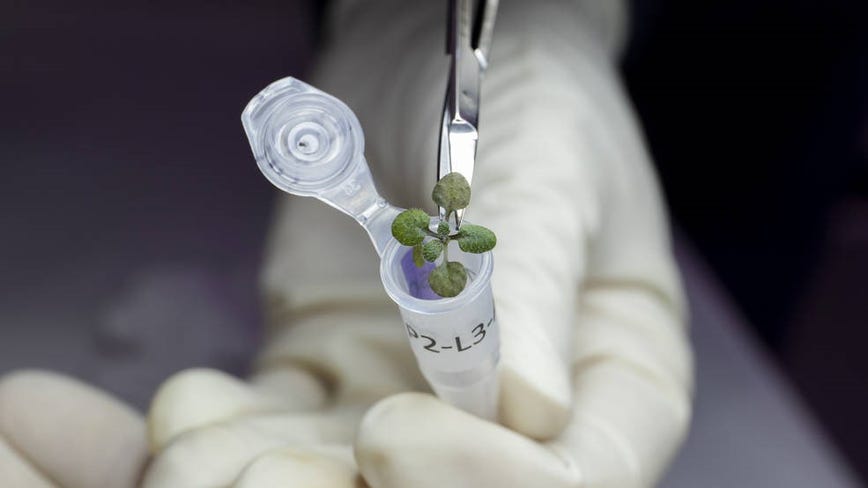Space Crops? Plants Successfully Grown in Lunar Soil
By Carlos Manuel Eusoya
 |
| PHOTO: UF/IFAS/Tyler Jones |
PLANTS ON THE MOON? 🌿🌑
While growing crops on the moon seems like a far-fetched idea from works of science fiction, scientists from the University of Florida have successfully grown plants on lunar soil. This monumental discovery is simply one step towards a future where crops may be planted directly on the moon’s surface.
For the experiment, the scientists utilized moon soil collected from the Moon during various astronaut expeditions, such as the Apollo 11, 12, and 17 missions. Only a few teaspoons of the lunar soil were actually used for the laboratory tests, which is approximately 12 grams. Earth-based pedolith, and engineered lunar and Martian soil samples, were also tested and compared with the Apollo-gathered lunar soil.
Arabidopsis thaliana was chosen as the plant specimen for the study, since the genetic blueprint (DNA code), as well as the various properties and environment responses of the plant, has already been identified and quantified by prior research. The seeds of Arabidopsis thaliana is also a relative of resistant mustard greens’ seeds, meaning the plant can grow easily in different natural conditions.
The collected soil samples were placed in very miniscule pots (with sizes as little as that of a thimble). The seeds of the plant specimen were grown on these pots, where they received a constant water supply and daily nutrient solutions.
Here comes the groundbreaking discovery: seeds sprouted on all pots, including the one containing the lunar soil sample. In fact, after six days, all plants looked similar regardless of the soil they were planted on. “Every plant — whether in a lunar sample or in a control — looked the same up until about day six,” quotes Anna-Lisa Paul, the lead author of the research paper.
However, after 20 days, differences popped up all over the plant samples. Genetic analysis revealed that plants in lunar soil samples have poor-grown roots, similar to plants grown in soil with heavy metals.
Nonetheless, this new breakthrough can affect the future of space travel. Once space scientists and biotechnologists have cracked the code for growing crops in other planets and moons, future expeditions and lunar missions will be less costly and more time-efficient. “This research is critical to the long-term human exploration goals [of the National Aeronautics and Space Administration]. We’ll need to use resources found on the Moon and Mars to develop food sources for future astronauts living and operating in deep space,” says NASA administrator Bill Nelson.
As such, the study’s authors vow to leave “no stone unturned” as they keep studying the contents of the lunar soil. Scientists are also aiming to find ways on how to make the moon’s natural environment more hospitable and feasible for plant growth.
